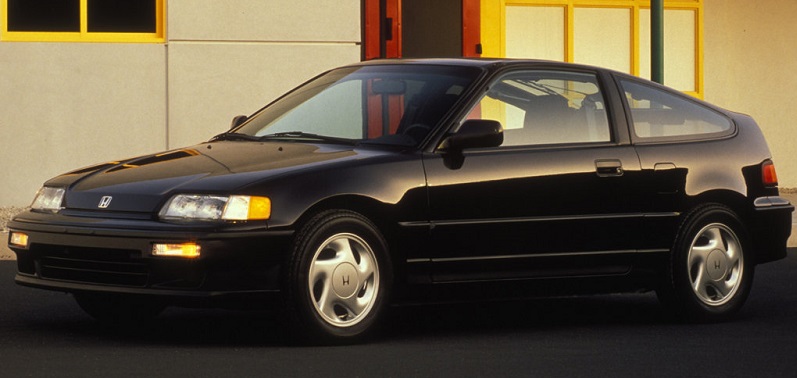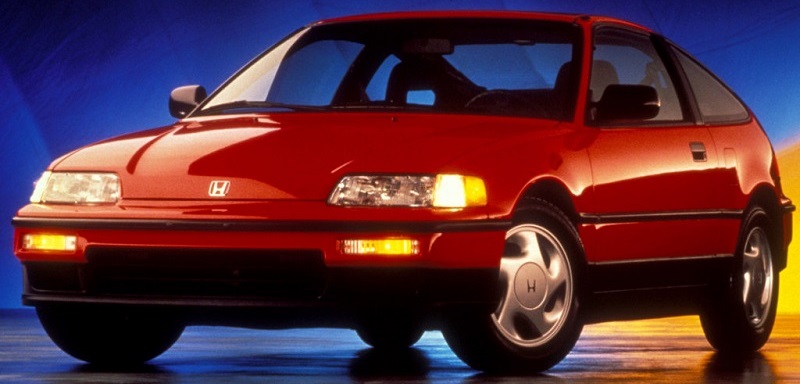Memory Lane - Honda CRX

“The CRX VTEC’s technology was ahead of its time. Its DNA is still present in the modern day Honda”
Nearly 30 years have passed since the second generation Honda CRX was unveiled. Although the stubby backed CRX, knows as a kammback, wasn’t to everyone’s taste its unique styling has aged well and has in fact been resurrected in the latest small Honda coupe, the CRZ.
The second generation CRX was built from 1987 to 1992 and replaced the very similar looking first generation, which was produced between 1983 and 1987. Every panel was different; the race track inspired double wishbone front suspension was quite different too, producing exceptional handling. The cutting edge VTEC version, which still has its DNA in the modern day Honda, now enjoys cult status.
The none-VTEC 1.6 CRX went on sale in January 1986 and cost £9,600, this had risen to £11,650 when it gave way to the VTEC version in late 1990 after a few months crossover between the two engines. The CRX VTEC was introduced in July 1990 with a list price of £13,900. Clearly with this pricing difference Honda felt the engine was something special.
It is quite hard to name its competitors as it was so unique, but cars such as the first generation Toyota MR2 was probably one of them. This went on sale in March 1985 and cost £9,499 for the standard roof. The T-Bar followed a year later with a higher list price of £11,998. Toyota also had the Corolla coupe; this was introduced in early 1986 with a list price of £8,350.
The CRX was such a compact coupe at just over 3.6 metres, which ruled out a few obvious competitors. Of course having a tailgate it was positioned by some against the hot hatchbacks of the day, such as the RS Turbo Escort, Astra GTE and Golf GTi, but these were true 4 seat cars whereas the CRX was a 2+2.

The styling was so unique that it hasn’t dated badly at all. The roof rake into the tailgate made it look very sleek and then there was the abrupt kammback with the tailgate glass extending downwards to the boot lip with the spoiler sat on top. Honda still use the lower glass tailgate set up on the Civic and CRZ today. The C pillars were very thin which emphasised its sleekness. At the front there was the nose with no grille, which admittedly did look a bit plain and more like the standard Civic. The standard specification was good too; it had alloy wheels, electric sunroof, electric windows, ABS, sports seats and variable power assisted steering.
This was the VTEC engine's first outing in Europe and it came in the form of a 1.6 double overhead camshaft set up with a crazy 150 hp. Due to the Japanese domestic market tax on larger capacity engine manufacturers had worked on getting more power from smaller capacity engines. They were way ahead of European markets on engine downsizing. This was achieved by making smaller engines that were lightweight, more efficient and more powerful. They also added turbochargers.
The key feature to the VTEC engine is variable valve timing. For decades the Clubsport fraternity had been tweaking their Vernier camshaft pulleys to optimise valve timing to their particular driving style, then along came Honda with an “off the shelf” solution. The design was ingenious: Most engines at the time had a compromise between low rev and high rev demands on valve timing which usually weighed in on the side of low rev drivability, which is where car engines spend most of their time.
What Honda did was come up with dynamic valve timing; when most engines were flagging due to the valve timing hitting its limit at about 5500 rpm the VTEC engaged a second set of camshaft lobes that altered the valve timing and enabled the engine to continue revving towards 8000 rpm. This of course appealed massively to the younger drivers of the day and the sound of the VTEC at the camshaft switch over point was so unusual and sporty that it became very addictive.

The other incredible feature of this engine was when it hit peak torque; this was way up the rev range at 7100 rpm. All these numbers equate to a 0 to 60 time of 8 seconds and a top speed of 130 mph. These figures no doubt were assisted by the fact it was so light at just over 1000 kg.
The design and technology that was crammed into this little Honda was incredible, with lots of the features still present in the modern day Honda. As is quite often the case with Japanese car manufacturers they lead the way with technology. When we get familiar with the technology and appreciate it, they have moved on another three steps.
As you would expect this car never sold in massive numbers, around 2000–2,500 including the none-VTEC earlier model. Today there is still a decent percentage left, about 200–300 or so. This is no doubt due to it finding buyers who knew what it was about early in its life and these people understanding the importance of preserving such a special car.
But in typical “out with the old in with the new” Japanese style the replacement CRX that went on sale in the summer of 1992, known as the Del Sol in some markets, completely changed the car. This time round it was an open top car with a removable roof panel. Although shunned by the loyal CRX owners, who couldn’t get on with the body style change, you couldn’t help but marvel at the crazy electric roof system on the VTi versions with its many motors and levers just to lift out a roof panel.
The Good: The incredible VTEC engine
The Bad: The lack of serious rustproofing
The Ugly: Killed off in its prime by the Del Sol
Next Month
Dave remembers the Renault Alpine A610



